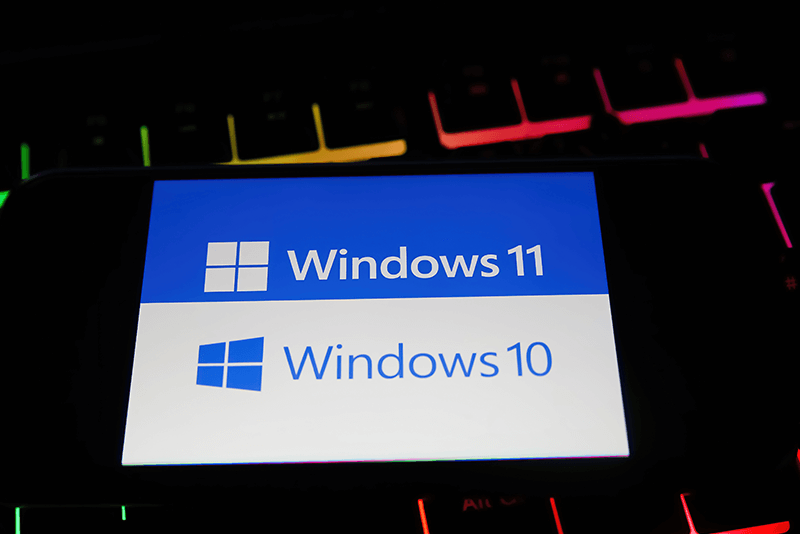
The Windows 10 End of Life (EOL) date has been set for October 14, 2025, forcing many people to make the decision of whether to upgrade to Windows 11 or consider other options. For many businesses, technology helps maintain productivity, security, and a competitive advantage, making their choice to upgrade or switch operating systems crucial to their work. Windows 11 may be an easier transition than using an all-new operating system for users familiar with Windows operating systems, but it still has its own distinctions from Windows 10. Learn how Windows 11 compares to its predecessor so you can determine if it’s the right choice for you before the Windows 10 EOL.
Understanding Windows 10 EOL
Microsoft announced that support for Windows 10 will officially end on October 14, 2025. After this date, Windows 10 will no longer receive security updates, patches, or technical support. So, while this operating system will still technically function, it will be increasingly susceptible to cyberthreats and software vulnerabilities, putting your information in great danger. Windows 10 EOL presents a clear need for businesses to either upgrade to Windows 11 or switch to another operating system.
Looking for more on the Windows 10 EOL date? Opt in for our monthly tips up to Windows 10’s last support date!
Comparing Windows 11 to Windows 10
Windows 11 has been available since 2021 and provides various features that set it apart from Windows 10. As with most new operating systems, Windows 11 has received mixed feedback due to many people’s love of the old Windows 10. It’s time to set the record straight and explain the changes Windows 11 made and how they actually impact your use of the operating system.
Redesigned User Interface
Windows 11 boasts a sleek, modern design that can feel more intuitive for many users. The Start menu is now centered on the taskbar, and the interface now has rounded windows instead of sharp corners. While this change is more aesthetic than functional, it’s designed to improve user experience and productivity by placing frequently used items front and center.
Productivity Features
Windows 10 may be familiar for its users, but it lacks advanced productivity enhancements, which may limit efficiency in fast-paced business environments. Windows 11 provides plenty of features to help increase efficiency such as snap assist which allows you to easily arrange multiple windows on your screen. Microsoft Teams is also now integrated directly into the task bar so you can send messages and make calls without even having to open the app. Lastly, Windows 11 offers a Focus Sessions tool which blocks out sections of your day to work and keeps track of your progress if linked to Microsoft To Do.
Performance Enhancements
Performance improvements are one of the most significant changes in Windows 11. Microsoft has optimized the operating system for faster load times and better efficiency, particularly on newer hardware. Compared to Windows 10, applications run more smoothly, and the system is generally quicker. This factor is very important, especially to businesses who use resource-intensive applications that need a strong operating system to get their work done.
Security Features
With Windows 10 EOL approaching, security should be a top priority of all users of this operating system. Windows 11 strengthens security by requiring more advanced hardware, such as Trusted Platform Module (TPM) 2.0. This security technology encrypts data and ensures platform integrity, keeping all your information safe.
While Windows 10 is just as secure as its newer counterpart, this will change after the Windows 10 EOL. This transition will leave Windows 10’s systems vulnerable to cyberthreats since no further cybersecurity updates or patches will be provided. That is unless you pay for Microsoft’s Extended Security Updates (ESUs) which start at $61 for the first year and doubles the following two until it is no longer available. Ultimately, you would still be risking losing your critical business information if you wanted to keep Windows 10 three years after its EOL.
Compatibility
Windows 11 is designed to work with newer hardware, meaning your older equipment may not meet this operating system’s requirements. As a result, you will need to invest in new technology that can keep up after Windows 10 EOL. On the other hand, Windows 10 has a broader compatibility with older hardware, lessening the need for you to purchase new equipment. However, with Windows 10 EOL drawing nearer, staying on this platform could lead to significant disruptions when hardware becomes outdated and unsupported.
What Would it Cost to Transition?
Microsoft is currently offering a free upgrade from Windows 10 to Windows 11 for users. There is a catch though: you must have a new enough computer to handle the update. Older machines may face additional expenses related to hardware upgrades or require a new computer altogether.
While sticking with Windows 10 may seem cost-effective in the short term, the long-term risks associated with using an unsupported operating system after Windows 10 EOL could be much more expensive. Potential data breaches and system failures could cost your business substantial amounts of money as well as your reputation as a secure organization.
Are You Ready to Upgrade?
Windows 10 EOL is on the horizon and it’s time for you to start planning your upgrade before October 14, 2025. Whether you decide to switch to Windows 11, stay with Windows 10, or change to a new operating system, you need to ensure your technology and information is protected at all times. At Strategy Tech Services, we can help minimize downtime and maximize security regardless of which path you choose. Book a conversation with our team of experts to discuss your options after Windows 10 EOL and prepare your business today.


